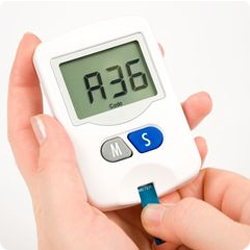Type II Diabetes is caused by insulin resistance or reduced insulin sensitivity or secretion. Type II Diabetes tends to occur in adults and is believed to be predisposed to obesity and other symptoms in family history or lifestyle. Type II diabetes may be present for many years before it is diagnosed.
Diet and exercise are sometimes enough to correct Type II Diabetes. If not, oral antidiabetic drugs are used to restore insulin production and reduce the hypoglycemic problems; hypoglycemia being the medical term for lowering the level of blood glucose.
Both forms of diabetes can result in long term complications. Among these are renal failure due to diabetic nephropathy, coronary artery disease and vision problems due to diabetic retinopathy. So it is essential, once diagnosed, that the diabetic take steps to improve their eating habits, increase the amount of exercise they take and balance both against a good restful eight hours of sleep every night. Diet and exercise are as essential as injections or oral medication.
Another form of Diabetes is Gestational Diabetes. This generally occurs during pregnancy and is most likely to improve or disappear after delivery. Gestational diabetes requires careful medical supervision throughout pregnancy. It is rare that gestational diabetes damages the health of either mother or baby. However, without medical attention the baby my suffer from a high birth weight or congenital cardiac and central nervous system problems.
The term 'diabetes' is Greek, meaning 'to stride or walk' In 1675 Thomas Willis added the word 'mellitus' from Latin meaning 'honey' in reference to the sweet taste of urine. The sweet taste was identified by Greeks, Chinese, Egyptians, Indians and Persians centuries ago. In 1776 Matthew Dobson confirmed the sweet taste was caused by excess sugar in the urine.
At one time diabetes mellitus was a death sentence. Before the creation of artificial insulin in 1921 there was no way to cause the pancreas to begin secreting insulin once it stopped.
The distinction between Type I and Type II Diabetes was discovered by Sir Harold Percival Himsworth and published in 1936. In 1988 Dr. Gerald Reaven's identified the 'metabolic syndrome'. In 1980 the U.S. biotech company, Genentech, developed human insulin. And in 1990 the 'St. Vincent Declaration' became the result of international effort to improve diabetic care.



